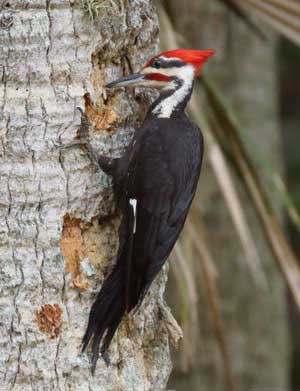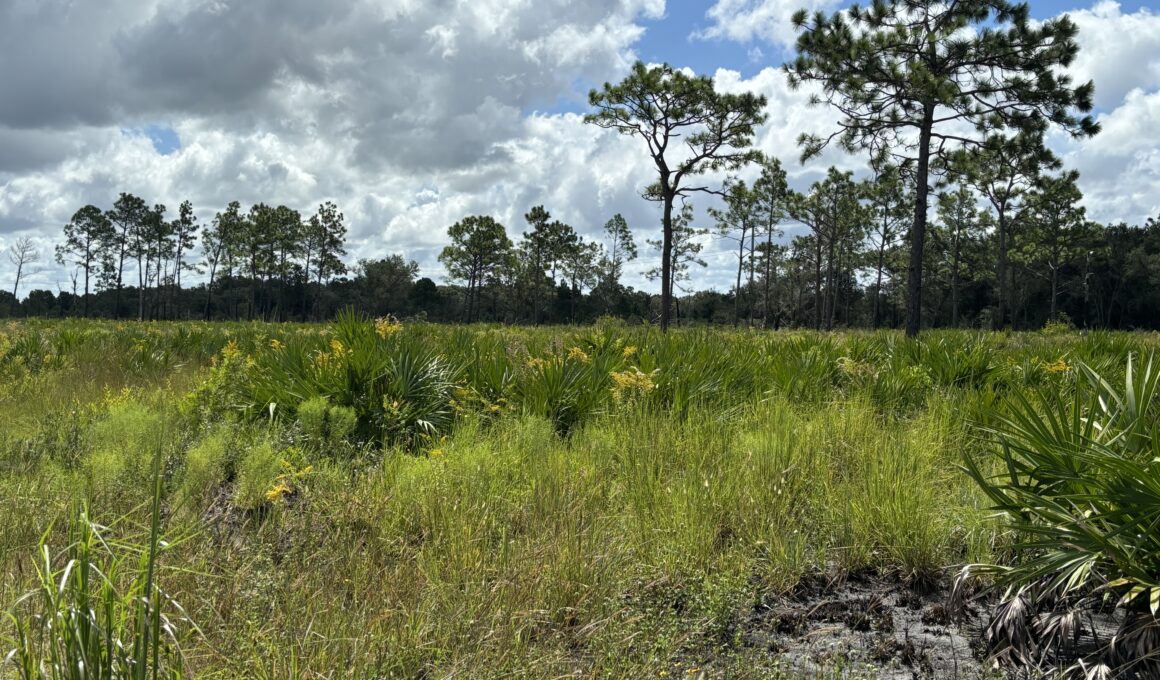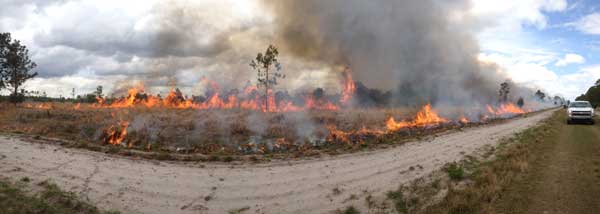
The first sign that Duette Preserve in northern Manatee County is not just another preserve is literally a sign: a mile-marker just inside the entrance gate. At more than 21,000 acres – about 33 square miles – Duette spans dual creeks that form the headwaters of the Manatee River and sweeps across multiple habitats, from vast pine uplands and oak hammocks to hardwood swamps and cypress domes.
The bird species that inhabit this extraordinary place also run the gamut from majestic bald eagles to tiny Bachman’s sparrows, an elusive bird considered to be one of the most rapidly declining species in North America as its habitat depends upon open grassy understories maintained with fire.
Visiting one morning in August, we counted 33 bird species in four hours, including all five species of woodpeckers, a rare solitary sandpiper foraging at the edge of the water, multiple loggerhead shrikes, hawks and kestrels, a brightly colored towhee, and eastern kingbirds adorned in “business suits” of gray, black and white. The streams that feed the Manatee River, and eventually supply much of Manatee County’s drinking water, were so full that day that we couldn’t reach the eastern section of the preserve where two threatened birds — burrowing owls and Florida’s endemic scrub jays — are often seen.
The highlight of the trip may have been a long-running battle between a red-tailed hawk and a juvenile bald eagle. Although the hawk is only about two-thirds the size of the eagle, it was flying higher than the eagle and stalking the much larger bird. “As long as the hawk is above the eagle, he can fly down at speed and hit the eagle, using gravity to help take him down,” said Ann Paul, president of both the Florida Ornithological Society and the Florida Birding and Nature Festival. “The hawk is safe as long as he stays above the eagle so every time the eagle goes up, the hawk has to go up even higher.”

They flew out of sight before the battle was finished. Still, it’s likely that they parted ways without serious bloodshed, said Mary Keith, past president of Tampa Audubon Society, its current conservation chair and a regular visitor to Duette as a long-time volunteer in Audubon’s Jay Watch program. “Probably what happened is that the hawk was trying to keep the eagle out of its territory. We could tell the eagle was still immature because it had a dark head, so it was likely to be just looking for food and riding the wind. The hawk was advising it to keep on moving, this area is already taken.”
From strip mine to nature preserve

In the early 1980s, the preserve appeared destined to become a phosphate mine as three large companies targeted the land for strip mining operations. Voters approved two land purchases – one in 1984 and another in 1986 – and Manatee County acquired the preserve to protect its municipal water supply. In the years since, the County and volunteers led by the Manatee Fish & Game Association have worked to restore habitats, making it one of the most diverse preserves in the Tampa Bay region.
Those distinct habitats are particularly clear along the entrance road, where one side is palmetto prairie and the other pine flatwoods, said Keith. “That’s not easy to achieve in Florida — it takes regular prescribed burns to keep the palmettos low and those areas open where birds can use them.”
Those regular fires that mimic those once started naturally by lightning have made Duette a haven for scrub jays that require a very specific habitat to thrive. When trees grow too tall, predatory birds can move in and so the jays leave.
While Duette is open daily to foot, bicycle or equestrian traffic, it’s only open to automobiles on Saturdays when regular hunts are not planned. The hunts are necessary, Keith explains, because feral hogs wreak such havoc on natural habitats, and deer can damage native plants by overgrazing.
The best way to see Duette is a field trip on its wagon led by experts who work there. The Florida Birding and Nature Festival will feature a field trip to Duette on Friday, Oct. 18, and the Fish & Game Association sponsors four trips per year, including Oct. 26 and Nov. 9, 2024, and then Feb. 8 and March 1 2025.
The Fish & Game Association has also created an online self-guided tour that walks visitors through the multiple habitats at the preserve, including information on efforts made to return the preserve to its natural state. Except for the cover photo, images in this article came from the fish association’s “Discover Duette Self-Guided Tour.”
Originally published Sept. 17, 2024.

